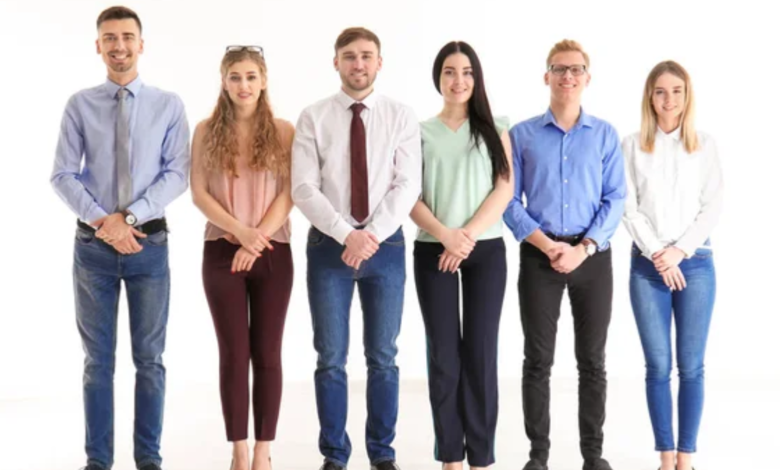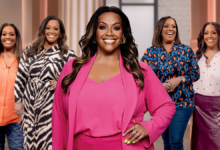Ugly People: Understanding Beauty, Bias, and the Human Experience

Introduction: What Do We Really Mean by “Ugly People”?
The phrase “ugly people” is as emotionally charged as it is culturally ingrained. It’s one of those terms that everyone recognizes but few stop to truly unpack. What does it actually mean to call someone ugly? Is it purely a matter of physical appearance, or does it go deeper? In reality, ugliness—like beauty—is often in the eye of the beholder, shaped by culture, psychology, and personal experience.
From a societal standpoint, we’re taught from a young age to revere beauty. Fairy tales, movies, social media, and advertisements paint a very narrow picture of what’s considered attractive. The rest? Often pushed to the margins, either ignored or mocked. But that’s not just shallow—it’s dangerous. Because in doing so, we risk overlooking the full humanity of individuals labeled as “ugly.”
In this article, we’ll explore the concept of ugliness, challenge mainstream beauty standards, investigate the psychological and social effects of being deemed unattractive, and ultimately, try to redefine the narrative. If we’re brave enough to question what we think we know about ugly people, we might just walk away with a better understanding of ourselves.
The Evolution of Beauty and Ugliness Through History
Beauty and ugliness weren’t always what they are today. Historically, different cultures have held vastly different standards of appearance. What was considered beautiful in Ancient Egypt, for instance, wouldn’t necessarily win you likes on Instagram today.
In Renaissance Europe, heavier body types were seen as a sign of wealth and fertility, thus desirable. Meanwhile, pale skin was once prized because it indicated that you didn’t have to labor outdoors. Fast forward to today, and we see tanned, slender bodies dominating the beauty narrative—particularly in Western culture. So if beauty changes, doesn’t ugliness, by default, shift as well?
Ugliness has often been associated with moral failing in historical contexts. In many folktales and myths, villains are portrayed with distorted or grotesque features to signal their inner corruption. That storytelling device—while effective—has caused a long-standing bias that conflates physical appearance with character.
Even more interestingly, what one culture may deem ugly, another may find attractive or even sacred. In certain African tribes, lip plates or scarification are beautiful markers of identity and status. These diverse perspectives highlight that ugliness isn’t a universal truth, but rather a reflection of subjective norms.
The Role of Media in Defining “Ugly”
The media wields immense power in shaping public perceptions of beauty and, by extension, ugliness. From childhood, we’re bombarded with imagery that subtly (and sometimes not-so-subtly) tells us who’s worthy of attention, love, and success.
Take film and television. When was the last time you saw a romantic lead who wasn’t conventionally attractive? Rarely do characters with acne, obesity, or other “non-glamorous” traits get center stage—unless it’s in a comedic or villainous role. This lack of representation not only reinforces stereotypes but also marginalizes millions of people.
Social media has intensified the problem. Filters, Photoshop, and curated selfies create an impossible standard. Platforms like Instagram and TikTok favor beauty influencers and trendsetters who fit specific ideals. This perpetuates a cycle where the already attractive gain more visibility and validation, while those who don’t fit the mold are left to question their worth.
But change is slowly brewing. More creators and campaigns are embracing diversity in appearance. The body positivity and inclusivity movements have helped normalize stretch marks, wrinkles, and different body types. Still, we have a long way to go in dismantling the deeply embedded notion of who gets to be considered “beautiful.”
Psychological Impact of Being Labeled “Ugly”
Being perceived as ugly—whether overtly or subtly—can take a serious toll on one’s mental health. Low self-esteem, anxiety, and even depression are common consequences. For children and teens, this can be especially devastating as they form their identities during these formative years.
Research has shown that individuals deemed unattractive often face social rejection, bullying, and even discrimination. This phenomenon is known as “lookism”—prejudice based on physical appearance. It’s a silent but powerful force in schools, workplaces, and even legal systems.
The impact doesn’t stop at external judgment. Over time, the internalization of these negative perceptions can shape a person’s self-concept. They might avoid social interactions, take fewer career risks, or settle in relationships because they feel undeserving of better. It’s not just about how others see them; it’s about how they begin to see themselves.
The Science Behnd Attractiveness and Perceived Ugliness
Scientists have long studied what makes a face attractive. Symmetry, skin clarity, and averageness are often cited as universally appealing traits. But even here, there’s nuance. While some biological factors play a role, cultural conditioning cannot be discounted.
Facial symmetry is thought to signal genetic health, while clear skin may indicate overall wellness. But consider this: not all traits considered attractive are indicators of actual health. Moreover, attraction is also influenced by familiarity, personality traits, and emotional connection.
What’s more, the concept of the “halo effect” explains how attractive people are often assumed to have other positive traits like intelligence or kindness. Conversely, those deemed unattractive may be unfairly associated with negative qualities. This bias affects everything from job prospects to legal outcomes, further marginalizing those who don’t meet conventional standards.
Ugliness as Empowerment: Reclaiming the Narrative
What if we stopped seeing ugliness as a curse and started viewing it as a form of liberation? Some activists and artists are doing exactly that. They are reclaiming the word “ugly,” turning it into a badge of authenticity and resilience.
The #UglyMovement, for instance, seeks to question and disrupt societal beauty norms. It challenges the idea that only certain people deserve to be visible or celebrated. Through art, fashion, and storytelling, participants are breaking down barriers and redefining what it means to be seen.
This shift in mindset is powerful. When people stop chasing unattainable ideals and start embracing their real selves, they become more confident and self-assured. It’s not about pretending that appearance doesn’t matter—because in our society, it still does—but rather about taking back the power to define it on one’s own terms.
Relationships and the “Ugly” Label: Dating, Friendship, and Love
Being considered unattractive can significantly affect romantic prospects. In a world that prioritizes appearance on dating apps and first impressions, people labeled as ugly often find themselves at a disadvantage.
However, real-world connections frequently transcend looks. Long-term attraction often hinges on emotional compatibility, humor, values, and shared experiences. Many couples defy conventional beauty norms, proving that love isn’t limited to the Instagram-worthy.
Friendships and familial relationships can also be shaped by appearance. Sadly, some individuals experience exclusion or ridicule even from close circles. But many also find deeper, more meaningful bonds with those who value character over cosmetics. In many ways, being labeled ugly can act as a filter—repelling the superficial and attracting the genuine.
Lookism and Discrimination: The Social Cost of Not Being Pretty
Lookism is as real as racism or sexism, yet far less acknowledged. It affects hiring decisions, wages, and even legal judgments. Studies have shown that attractive people are more likely to be hired, promoted, and perceived as competent—even when their skills are identical to those of less attractive peers.
In education, teachers may unconsciously favor more attractive students, assuming they are more capable or well-behaved. In healthcare, patients perceived as ugly may receive less compassionate treatment. These disparities add up, resulting in tangible disadvantages over a lifetime.
Addressing lookism requires both awareness and action. Employers, educators, and policymakers must be trained to recognize and counteract this bias. Only then can we hope to create a truly equitable society that values substance over surface.
Comedy, Satire, and the “Ugly” Trope
Ugly characters have long been a staple in comedy, often used for cheap laughs. From cartoon villains with warts and crooked teeth to bumbling sidekicks portrayed as undesirable, humor has historically leaned on stereotypes.
While satire can be a powerful tool for challenging norms, it often crosses the line into cruelty. The joke becomes less about critiquing beauty standards and more about reinforcing them. This kind of humor, even when masked as innocent, contributes to the stigma surrounding so-called ugly people.
However, some comedians and creators are flipping the script. By openly discussing their own appearance-related insecurities or mocking societal standards themselves, they create space for empathy and reflection. The key difference lies in intention and impact—are we laughing with someone, or at them?
Moving Towar a More Inclusive Society
We may not be able to completely eliminate appearance-based judgments, but we can become more mindful of how we treat others. Teaching empathy, promoting diverse representation, and challenging internalized biases are essential steps toward inclusivity.
Schools and parents can play a huge role in this transformation. By exposing children to different body types, cultures, and ways of being beautiful, we lay the foundation for a more accepting world. Media companies, too, must be held accountable for the images they project and the stories they tell.
Ultimately, we all have a part to play. By shifting our focus from appearance to authenticity, from symmetry to sincerity, we can build communities that celebrate people not for how they look, but for who they are.
Conclusion: Rethinking Ugliness, Rediscovering Humanity
The concept of “ugly people” isn’t about a certain look—it’s about a certain judgment. And like most judgments, it tells us more about the observer than the observed. When we label someone as ugly, we’re often revealing our own fears, insecurities, and biases.
But there’s another way. By choosing to look beyond the surface, we can cultivate deeper connections, greater compassion, and a richer understanding of human beauty. It starts with questioning the assumptions we’ve inherited and ends with embracing the messy, complex, and glorious diversity of people around us.
Because at the end of the day, beauty may catch the eye—but character keeps the soul engaged.
FAQs About “Ugly People”
1. Is ugliness really objective or completely subjective? While some biological preferences may influence attraction, ugliness is largely subjective and shaped by cultural, social, and psychological factors.
2. Can people labeled as ugly still succeed in life? Absolutely. Many individuals considered unattractive by societal standards have achieved incredible success in all areas of life—from business to love to creative arts.





